�
The Finite Element Method
Fifth edition
Volume 1: The Basis
Professor O.C. Zienkiewicz, CBE, FRS, FREng is Professor Emeritus and Director
of the Institute for Numerical Methods in Engineering at the University of Wales,
Swansea, UK. He holds the UNESCO Chair of Numerical Methods in Engineering
at the Technical University of Catalunya, Barcelona, Spain. He was the head of the
Civil Engineering Department at the University of Wales Swansea between 1961
and 1989. He established that department as one of the primary centres of ®nite
element research. In 1968 he became the Founder Editor of the International Journal
for Numerical Methods in Engineering which still remains today the major journal
in this ®eld. The recipient of 24 honorary degrees and many medals, Professor
Zienkiewicz is also a member of ®ve academies ± an honour he has received for his
many contributions to the fundamental developments of the ®nite element method.
In 1978, he became a Fellow of the Royal Society and the Royal Academy of
Engineering. This was followed by his election as a foreign member to the U.S.
Academy of Engineering (1981), the Polish Academy of Science (1985), the Chinese
Academy of Sciences (1998), and the National Academy of Science, Italy (Academia
dei Lincei) (1999). He published the ®rst edition of this book in 1967 and it remained
the only book on the subject until 1971.
Professor R.L. Taylor has more than 35 years' experience in the modelling and simu-
lation of structures and solid continua including two years in industry. In 1991 he was
elected to membership in the U.S. National Academy of Engineering in recognition of
his educational and research contributions to the ®eld of computational mechanics.
He was appointed as the T.Y. and Margaret Lin Professor of Engineering in 1992
and, in 1994, received the Berkeley Citation, the highest honour awarded by the
University of California, Berkeley. In 1997, Professor Taylor was made a Fellow in
the U.S. Association for Computational Mechanics and recently he was elected
Fellow in the International Association of Computational Mechanics, and was
awarded the USACM John von Neumann Medal. Professor Taylor has written sev-
eral computer programs for ®nite element analysis of structural and non-structural
systems, one of which, FEAP, is used world-wide in education and research environ-
ments. FEAP is now incorporated more fully into the book to address non-linear and
®nite deformation problems.
Front cover image: A Finite Element Model of the world land speed record (765.035 mph) car THRUST
SSC. The analysis was done using the ®nite element method by K. Morgan, O. Hassan and N.P. Weatherill
at the Institute for Numerical Methods in Engineering, University of Wales Swansea, UK. (see K. Morgan,
O. Hassan and N.P. Weatherill, `Why didn't the supersonic car ¯y?', Mathematics Today, Bulletin of the
Institute of Mathematics and Its Applications, Vol. 35, No. 4, 110±114, Aug. 1999).
�
The Finite Element
Method
Fifth edition
Volume 1: The Basis
O.C. Zienkiewicz, CBE, FRS, FREng
UNESCO Professor of Numerical Methods in Engineering
International Centre for Numerical Methods in Engineering, Barcelona
Emeritus Professor of Civil Engineering and Director of the Institute for
Numerical Methods in Engineering, University of Wales, Swansea
R.L. Taylor
Professor in the Graduate School
Department of Civil and Environmental Engineering
University of California at Berkeley
Berkeley, California
OXFORD AUCKLAND BOSTON JOHANNESBURG MELBOURNE NEW DELHI
�
Butterworth-Heinemann
Linacre House, Jordan Hill, Oxford OX2 8DP
225 Wildwood Avenue, Woburn, MA 01801-2041
A division of Reed Educational and Professional Publishing Ltd
First published in 1967 by McGraw-Hill
Fifth edition published by Butterworth-Heinemann 2000
# O.C. Zienkiewicz and R.L. Taylor 2000
All rights reserved. No part of this publication
may be reproduced in any material form (including
photocopying or storing in any medium by electronic
means and whether or not transiently or incidentally
to some other use of this publication) without the
written permission of the copyright holder except
in accordance with the provisions of the Copyright,
Designs and Patents Act 1988 or under the terms of a
licence issued by the Copyright Licensing Agency Ltd,
90 Tottenham Court Road, London, England W1P 9HE.
Applications for the copyright holder's written permission
to reproduce any part of this publication should
be addressed to the publishers
British Library Cataloguing in Publication Data
A catalogue record for this book is available from the British Library
Library of Congress Cataloguing in Publication Data
A catalogue record for this book is available from the Library of Congress
ISBN 0 7506 5049 4
Published with the cooperation of CIMNE,
the International Centre for Numerical Methods in Engineering,
Barcelona, Spain (www.cimne.upc.es)
Typeset by Academic & Technical Typesetting, Bristol
Printed and bound by MPG Books Ltd
�
Dedication
This book is dedicated to our wives Helen and Mary
Lou and our families for their support and patience
during the preparation of this book, and also to all of
our students and colleagues who over the years have
contributed to our knowledge of the ®nite element
method. In particular we would like to mention
Professor Eugenio OnÄ ate and his group at CIMNE for
their help, encouragement and support during the
preparation process.
�
Contents
Preface
1. Some preliminaries: the standard discrete system
Introduction
The structural element and the structural system
1.1
1.2
1.3 Assembly and analysis of a structure
1.4
1.5
1.6
1.7
1.8
The boundary conditions
Electrical and ¯uid networks
The general pattern
The standard discrete system
Transformation of coordinates
References
2. A direct approach to problems in elasticity
Introduction
Convergence criteria
2.1
2.2 Direct formulation of ®nite element characteristics
2.3 Generalization to the whole region
2.4 Displacement approach as a minimization of total potential energy
2.5
2.6 Discretization error and convergence rate
2.7 Displacement functions with discontinuity between elements
2.8
2.9 Direct minimization
2.10 An example
2.11 Concluding remarks
Bound on strain energy in a displacement formulation
References
3. Generalization of the ®nite element concepts. Galerkin-weighted residual
Introduction
Integral or `weak' statements equivalent to the dierential equations
and variational approaches
3.1
3.2
3.3 Approximation to integral formulations
3.4
Virtual work as the `weak form' of equilibrium equations for
analysis of solids or ¯uids
xv
1
1
4
8
9
10
12
14
15
16
18
18
19
26
29
31
32
33
34
35
35
37
37
39
39
42
46
53
�
viii Contents
Partial discretization
Convergence
3.5
3.6
3.7 What are `variational principles'?
3.8
`Natural' variational principles and their relation to governing
dierential equations
Establishment of natural variational principles for linear,
self-adjoint dierential equations
3.9
3.10 Maximum, minimum, or a saddle point?
3.11 Constrained variational principles. Lagrange multipliers and
adjoint functions
3.12 Constrained variational principles. Penalty functions and the least
square method
3.13 Concluding remarks
References
4. Plane stress and plane strain
4.1
4.2
4.3
4.4
4.5
4.6
Introduction
Element characteristics
Examples ± an assessment of performance
Some practical applications
Special treatment of plane strain with an incompressible material
Concluding remark
References
5. Axisymmetric stress analysis
Introduction
Element characteristics
Some illustrative examples
Early practical applications
5.1
5.2
5.3
5.4
5.5 Non-symmetrical loading
5.6 Axisymmetry ± plane strain and plane stress
References
6. Three-dimensional stress analysis
6.1
6.2
6.3
6.4
Introduction
Tetrahedral element characteristics
Composite elements with eight nodes
Examples and concluding remarks
References
7. Steady-state ®eld problems ± heat conduction, electric and magnetic
potential, ¯uid ¯ow, etc.
7.1
7.2
7.3
7.4
7.5
7.6
Introduction
The general quasi-harmonic equation
Finite element discretization
Some economic specializations
Examples ± an assessment of accuracy
Some practical applications
55
58
60
62
66
69
70
76
82
84
87
87
87
97
100
110
111
111
112
112
112
121
123
124
124
126
127
127
128
134
135
139
140
140
141
143
144
146
149
�
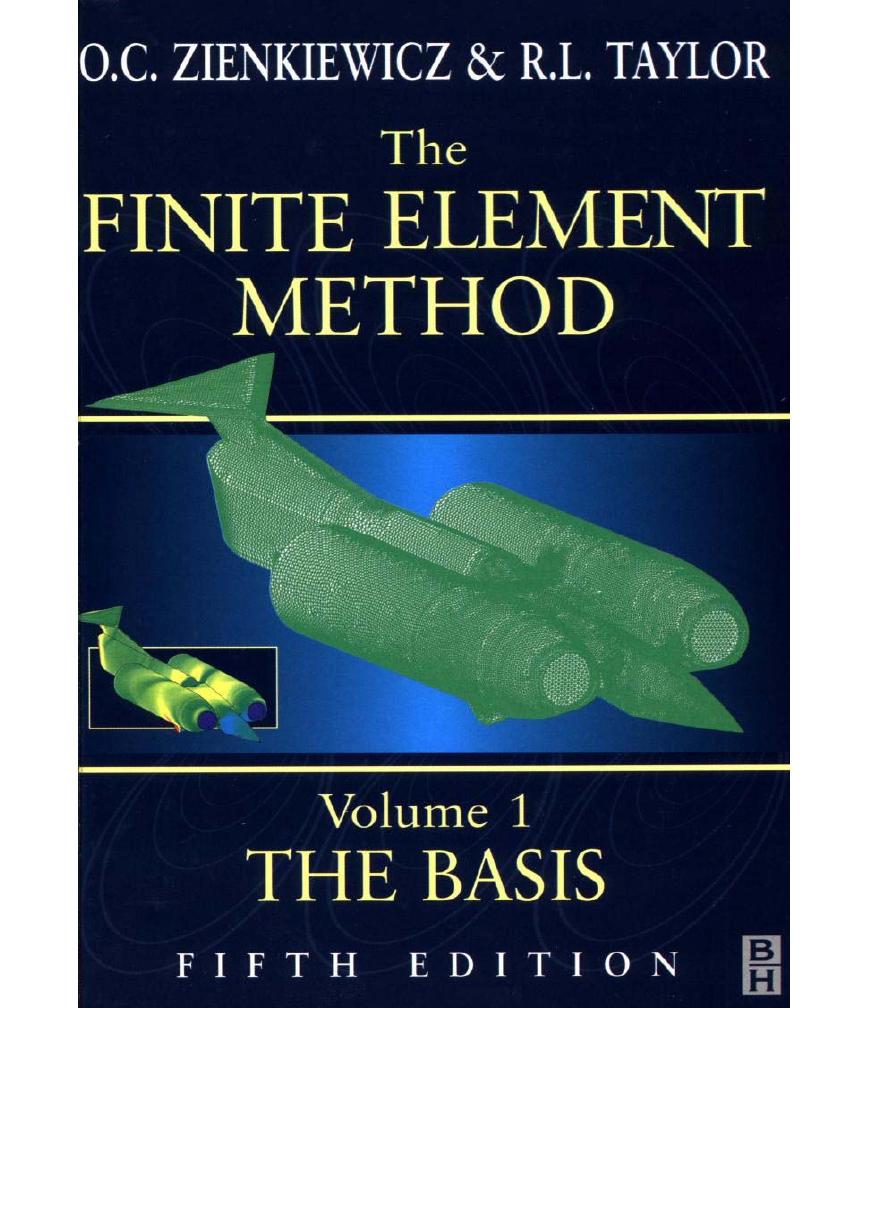

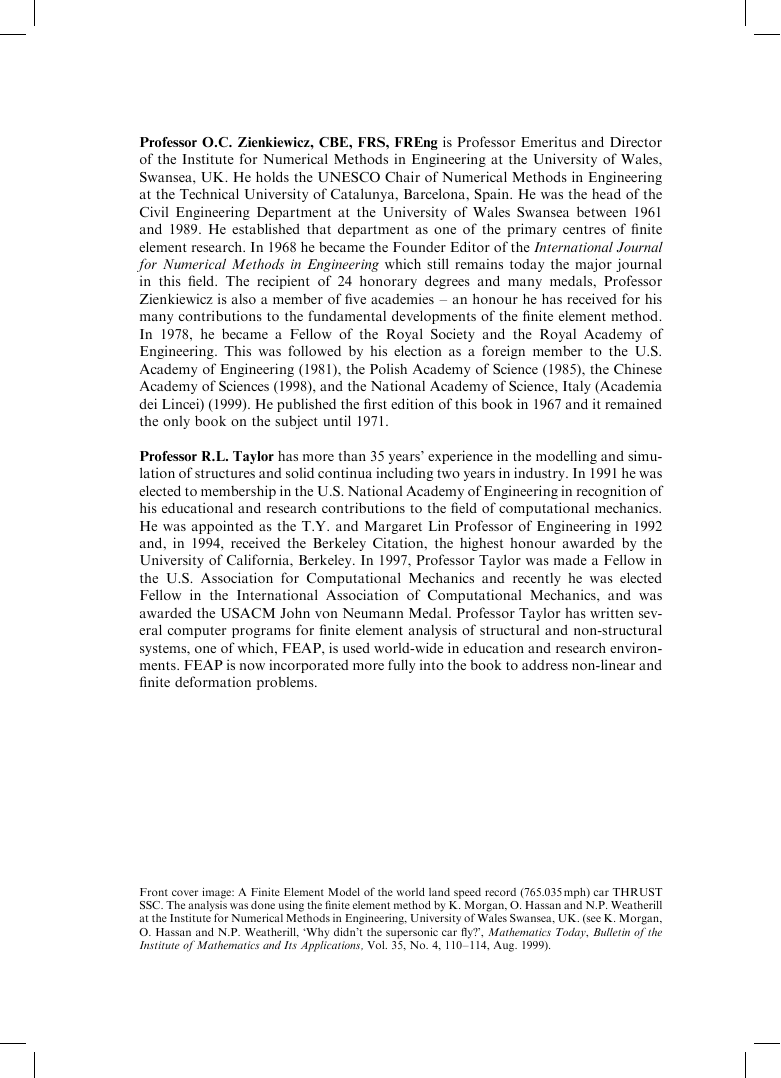
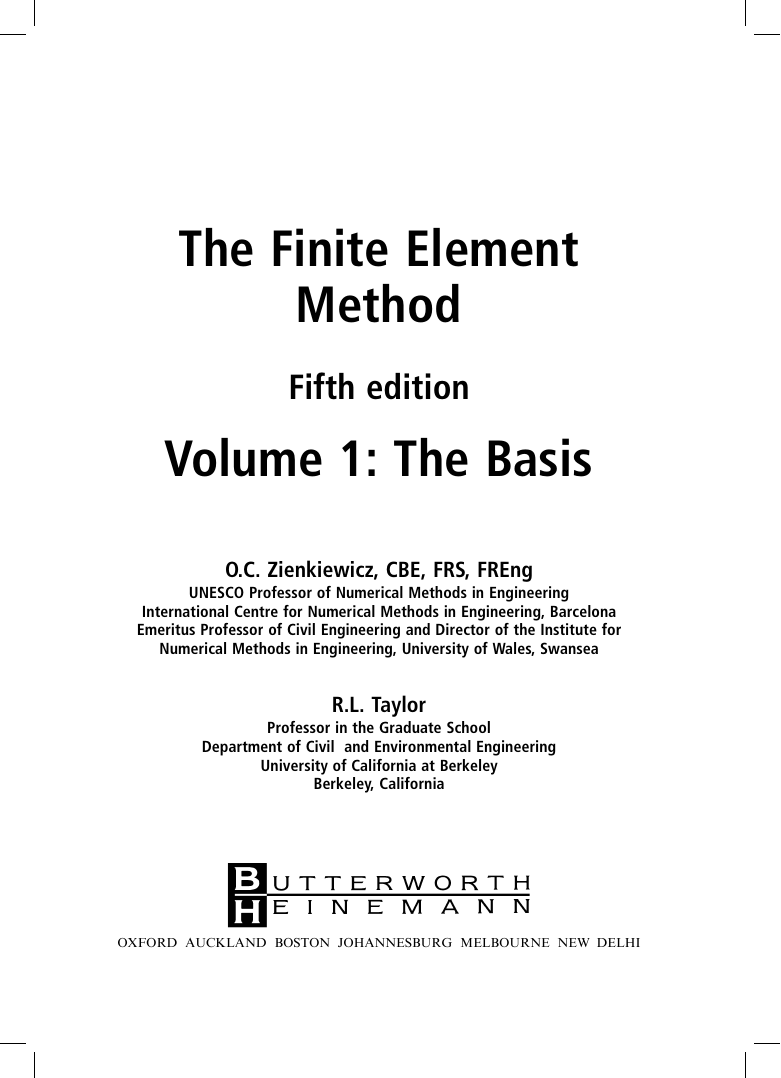

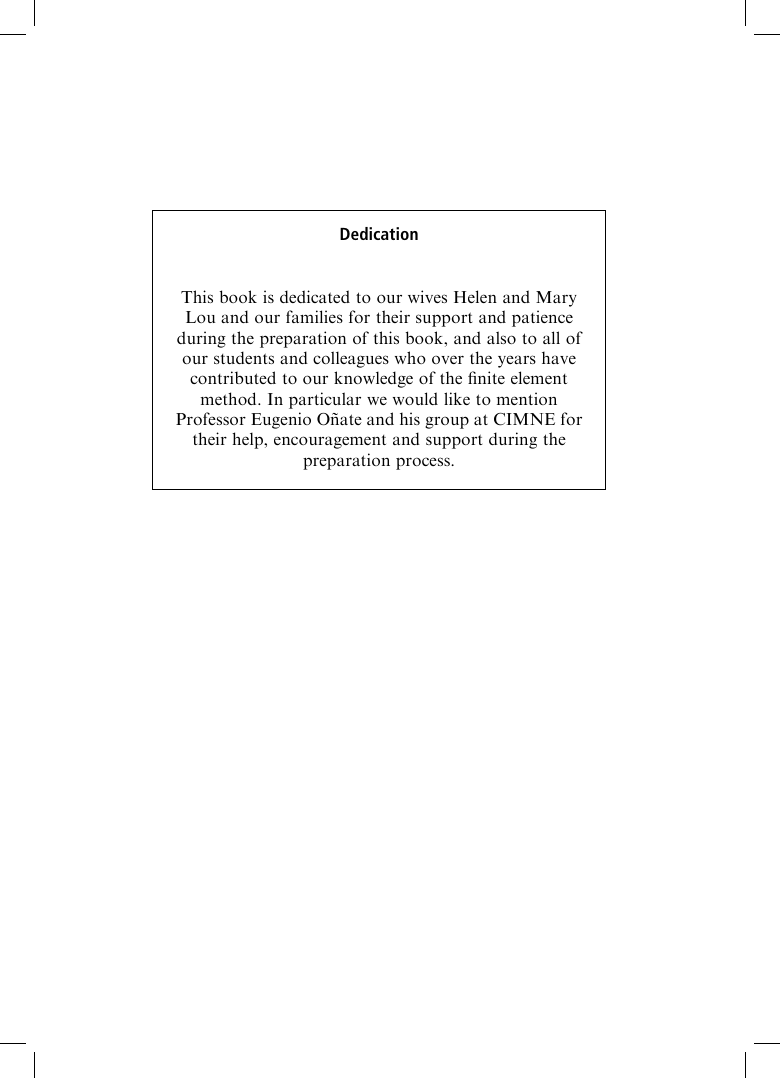
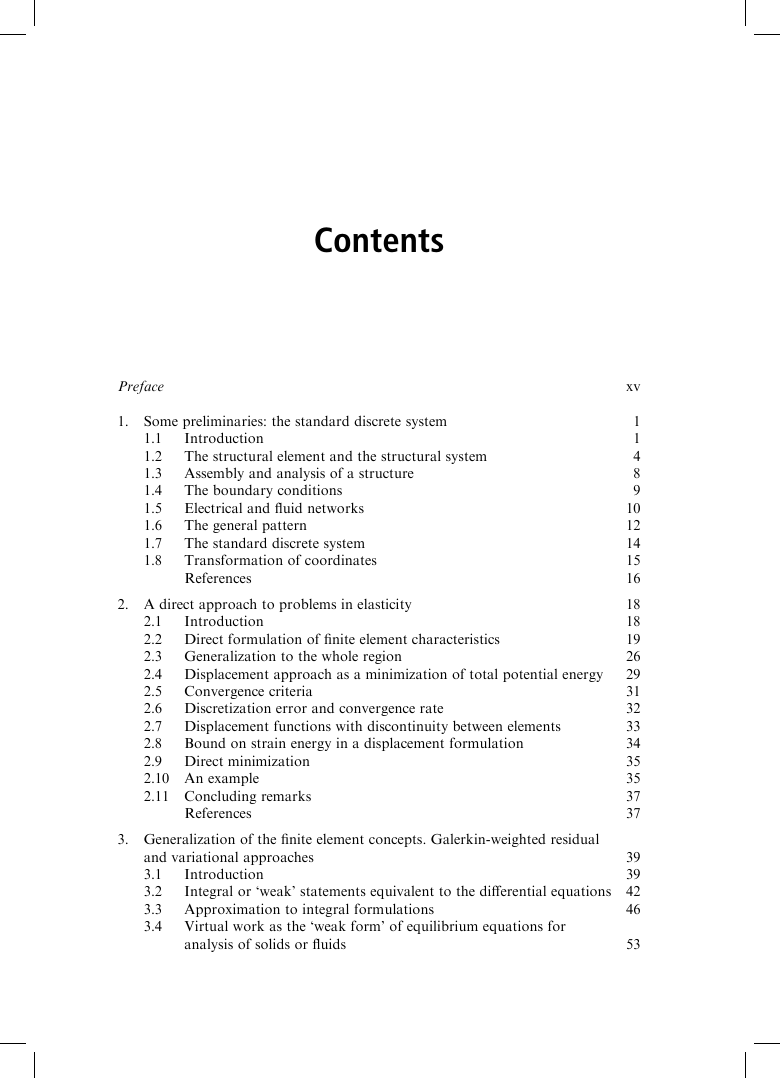
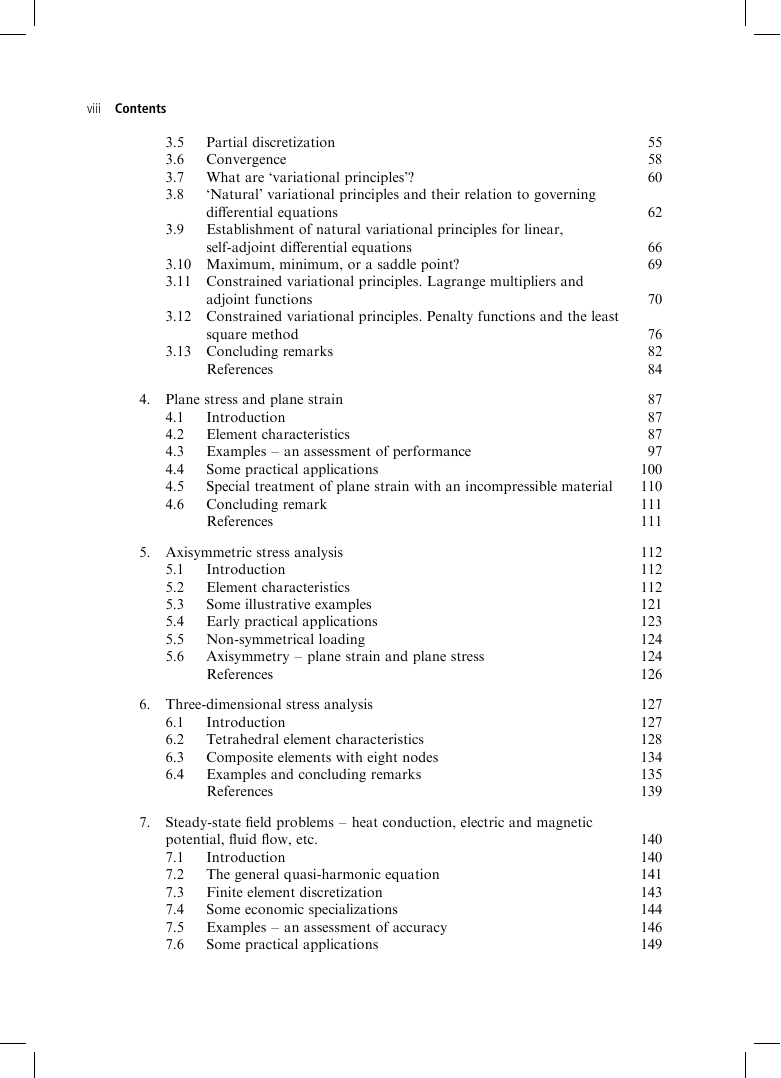








 2023年江西萍乡中考道德与法治真题及答案.doc
2023年江西萍乡中考道德与法治真题及答案.doc 2012年重庆南川中考生物真题及答案.doc
2012年重庆南川中考生物真题及答案.doc 2013年江西师范大学地理学综合及文艺理论基础考研真题.doc
2013年江西师范大学地理学综合及文艺理论基础考研真题.doc 2020年四川甘孜小升初语文真题及答案I卷.doc
2020年四川甘孜小升初语文真题及答案I卷.doc 2020年注册岩土工程师专业基础考试真题及答案.doc
2020年注册岩土工程师专业基础考试真题及答案.doc 2023-2024学年福建省厦门市九年级上学期数学月考试题及答案.doc
2023-2024学年福建省厦门市九年级上学期数学月考试题及答案.doc 2021-2022学年辽宁省沈阳市大东区九年级上学期语文期末试题及答案.doc
2021-2022学年辽宁省沈阳市大东区九年级上学期语文期末试题及答案.doc 2022-2023学年北京东城区初三第一学期物理期末试卷及答案.doc
2022-2023学年北京东城区初三第一学期物理期末试卷及答案.doc 2018上半年江西教师资格初中地理学科知识与教学能力真题及答案.doc
2018上半年江西教师资格初中地理学科知识与教学能力真题及答案.doc 2012年河北国家公务员申论考试真题及答案-省级.doc
2012年河北国家公务员申论考试真题及答案-省级.doc 2020-2021学年江苏省扬州市江都区邵樊片九年级上学期数学第一次质量检测试题及答案.doc
2020-2021学年江苏省扬州市江都区邵樊片九年级上学期数学第一次质量检测试题及答案.doc 2022下半年黑龙江教师资格证中学综合素质真题及答案.doc
2022下半年黑龙江教师资格证中学综合素质真题及答案.doc